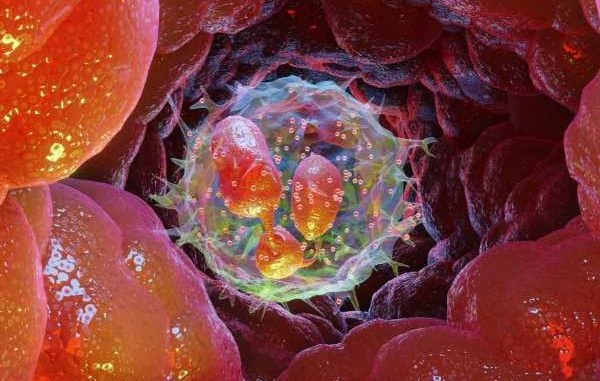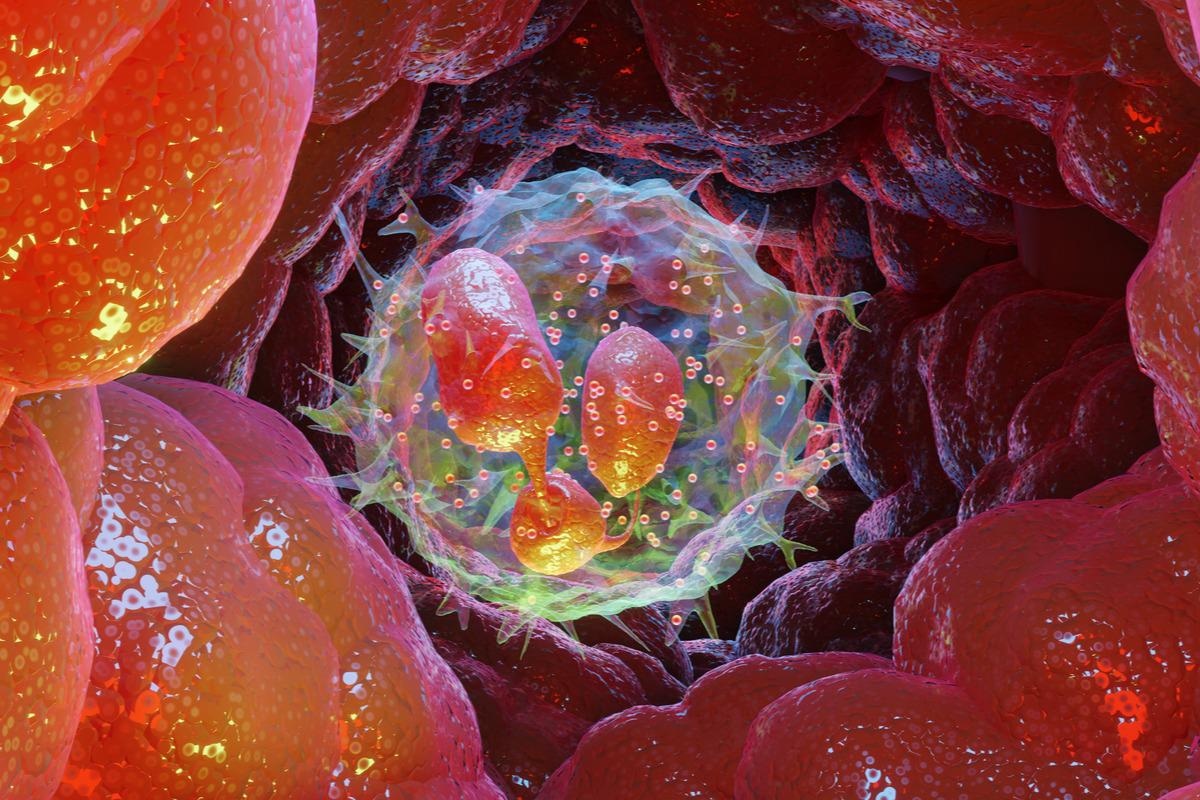
Inflammation is a protective body response to external noxious stimuli, enabling host defense and tissue repair mechanisms. However, excessive inflammatory response causes tissue injury and may lead to organ failure.
However, a scarcity of effective drugs to treat severe inflammation exists, thus, necessitating therapeutic innovations.

Background
Macrophages are inflammatory mediators that mediate tissue repair and act as defense mechanisms against pathogens. Inflammatory macrophages show higher CD44 expression. CD44 is a cell surface marker that is efficacious in resolving lung inflammation; its deficiency can cause hyaluronic acid accumulation in the lungs.
Hyaluronic acid (HA) induces pro-inflammatory cytokine expression in alveolar macrophages. CD44, expressed in response to activated immune cells, acts as a metal transporter that promotes copper uptake.
The study
A study posted to the bioRxiv* preprint server identified mechanisms regulating immune cell plasticity to develop new therapeutics.
Here, CD44 mediated mitochondrial copper uptake and its consequences were studied and a drug targeting the mitochondrial copper was developed.
A copper-signaling pathway was discovered, which regulates macrophage plasticity towards an inflammatory state.
Findings
It was found that CD44, a pro-inflammatory cell surface marker, mediates copper uptake and enables macrophage activation.
A labile pool of copper(II) exists in the mitochondria of inflammatory cells, along with a specific chemical reaction. Oxidized nicotinamide adenine dinucleotide (NAD+) maintenance allows for epigenetic programming and triggers the expression of inflammatory genes. When macrophages are exposed to various pathogens, such as bacteria and viruses, this mechanism comes into effect.
Since inflammation is common to a spectrum of diseases as well as certain physiological processes, uncovering and targeting mechanisms underlying cell activation and plasticity are essential for designing novel therapeutic strategies.
CD44 regulates cell plasticity in specific cell types. Copper plays a crucial role in immune defense and protects against bacteria by promoting the generation of reactive oxygen species (ROS). The results of this study revealed that mitochondrial copper(II) levels escalate during macrophage activation—which can be targeted with small molecules.
In addition, the mitochondria of inflammatory macrophages harbor higher levels of hydrogen peroxide. Although this substrate was earlier deemed potentially toxic, the up-scaled production of hydrogen peroxide seems to be aimed at replenishing the pool of NAD+ from NADH. This mechanism may be more favorable than de novo biosynthesis, with respect to the energy requirement of the cells. Hence, hydrogen peroxide can serve as a functional metabolite.
A chemical reaction was described, in which copper(II) activates hydrogen peroxide; this enables the reduction of the metabolite via NADH to yield NAD+. It was proposed that complex I of the electron transport chain (ETC), harboring an NADH binding site, along with imidazole-containing histidine residues close to the flavin mononucleotide (FMN), aid in the reduction of hydrogen peroxide.
Identification of numerous iron-dependent demethylases and acetyltransferases signified a common epigenetic mechanism underlying macrophage activation.
Moreover, a copper-catalyzed reaction was found to be feasible without enzymatic action. Imidazole, which occurs in mitochondrial proteins, binds to copper(II) and can catalyze this reaction. However, when copper is scarce or absent, NADH and hydrogen peroxide yield by-products of oxidation. Therefore, copper(II) prevents NADH degradation and aids in maintaining NAD(H) redox cycling.
The same is true for the reactivity of enamines towards dimethyldioxirane—which produces highly reactive epoxides. Epoxide hydrolases are present in the mitochondria of mammalian cells.
Interestingly, epoxide hydrolases have been detected in the mitochondria of mammalian cells; these prevent the accumulation of chemically reactive species and hence ward off alkylation by-products. Imidazole residues in the mitochondria catalyze the reaction of copper(II) – thus, suggesting a probable enzyme-mediated process.
It was inferred that acute inflammation resembles metabolic disease and can be mitigated by modulating cell plasticity by targeting mitochondrial copper(II).
Metformin is known for its broad anti-inflammatory action and is now being tested for its anti-aging properties. A major drawback of this drug is low potency, thus, necessitating a high dosage. Other biguanide derivatives have shown better potency, for instance – LCC-12. These alternatives can render improvements and clinical and biological characterization of this class of drugs feasible.
Conclusion
The results illustrate how copper plays a central role in the regulation of cell plasticity and disclose a novel therapeutic strategy that employs modulation and refining of the epigenetic cell states.
*Important notice
bioRxiv publishes preliminary scientific reports that are not peer-reviewed and, therefore, should not be regarded as conclusive, guide clinical practice/health-related behavior, or treated as established information.
- Solier, S., Muller, S., Caneque, T., et al. (2022). Discovery of a druggable copper-signaling pathway that drives cell plasticity and inflammation. bioRxiv. doi: 10.1101/2022.03.29.486253. https://www.biorxiv.org/content/10.1101/2022.03.29.486253v1
Posted in: Medical Science News | Disease/Infection News | Healthcare News
Tags: Adenine, Aging, AIDS, Anti-Inflammatory, Bacteria, Cell, chemical reaction, Copper, Coronavirus Disease COVID-19, Cycling, Cytokine, Drugs, Electron, Enzyme, Genes, Histidine, Hydrogen Peroxide, Inflammation, Lungs, Macrophage, Mammalian Cells, Metabolic Disease, Metabolite, Metformin, Mitochondria, Oxygen, Signaling Pathway, Therapeutics

Written by
Nidhi Saha
I am a medical content writer and editor. My interests lie in public health awareness and medical communication. I have worked as a clinical dentist and as a consultant research writer in an Indian medical publishing house. It is my constant endeavor is to update knowledge on newer treatment modalities relating to various medical fields. I have also aided in proofreading and publication of manuscripts in accredited medical journals. I like to sketch, read and listen to music in my leisure time.
Source: Read Full Article